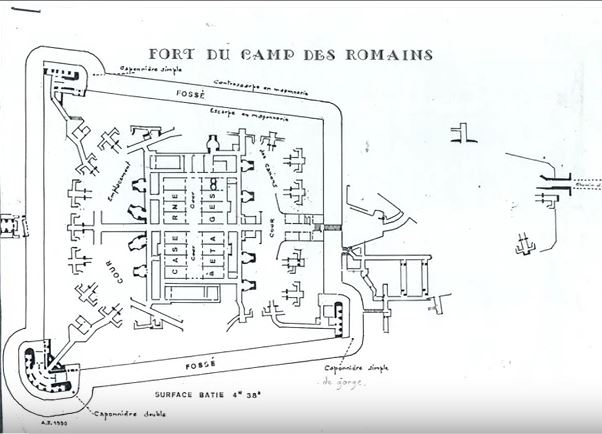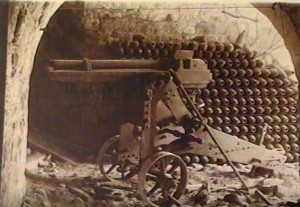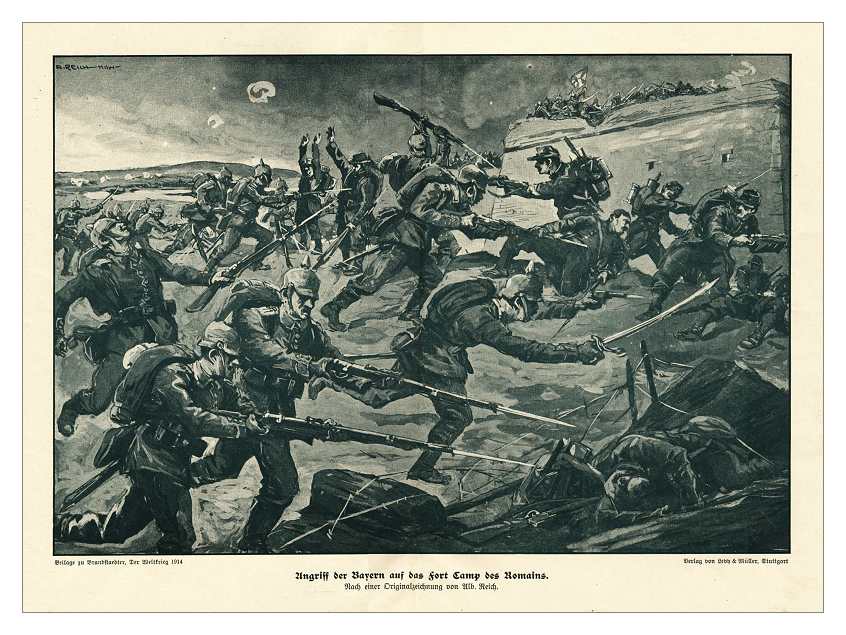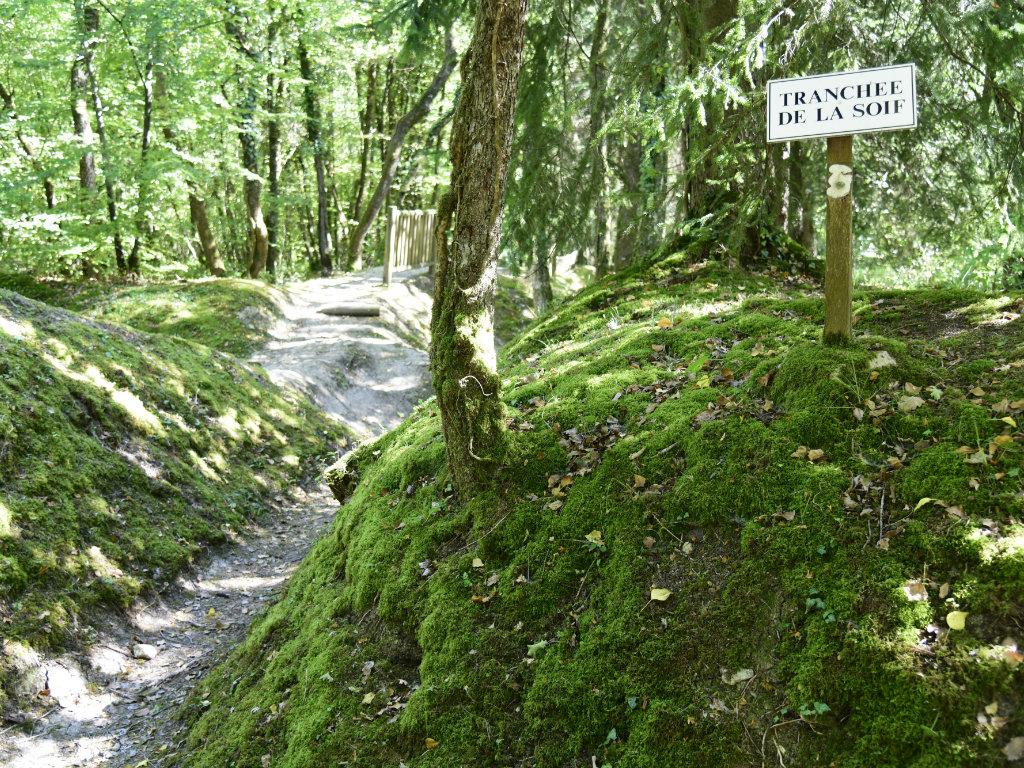After the French defeat in the Franco-Prussian War and the signature of the Treaty of Frankfurt in 1871, the Franco-German border was moved, depriving Lorraine of much of its land.
The fort at Le Camp des Romains was built on a spur of rock overlooking the Meuse, with an altitude of 380 metres. It was a key position in the system known as the “Meuse Hills Curtain” because it kept watch over the Meuse Valley, the road between Pont à Mousson and Bar le Duc and the bridges at Saint Mihiel and Han sur Meuse. The fort at Le Camp des Romains also monitored the gaps between the forts at Les Paroches, Troyon and Liouville. It was equipped with a signalling station, enabling it to communicate with Forts Liouville, Génicourt and Rozelier (Verdun).
Construction dates: 1875 – 1878
Building cost: 1,877,500 gold francs
The fort was designed to accommodate 831 men.


On the eve of the First World War, the fort had 38 guns – ten 120 mm guns, ten 90 mm carriage-mounted guns, four howitzers, six flanking machine-guns, four revolving cannons four 12-calibre front loading guns (“12 culasse”). It also had 150,000 shells.
Despite a number of modernisation schemes, the fort at Le Camp des Romains had never been renovated or reinforced with concrete. Its flanking guns had no armour plating and were, therefore, unprotected. Since many of the men had been withdrawn by General Joffre, there was no infantry in interval positions to provide close defence of the fort.
On 25 September 1914, after 48 hours of particularly intense shelling by German heavy artillery and dogged fighting on both sides, the French soldiers were overwhelmed by an attack by elite Bavarian troops.
Le Camp des Romains remained in German hands throughout the remainder of the First World War. It was recaptured by French troops on 13 September 1918, during the Battle of Saint-Mihiel.

As soon as the Germans captured Saint-Mihiel at the end of September 1914, they began strengthening their positions on the hilltops.
In an effort to retake the territory lost, whatever the cost, the French troops attacked mercilessly throughout this sector. In 1915, the wooded area between Bois d’Ailly and Bois le Prêtre held the sombre record for the place with the largest number of cadavers. The Germans described the area as “Hell”.
This was the situation when, on 20 May 1915, the 7th company of the French 172nd infantry regiment tried to recapture the German lines and found itself cut off on the 4th German line and surrounded by enemies. Although they were short of everything (food and more importantly water), the men led by Commandant André held out for three days. When they were eventually forced to surrender, Commandant André addressed them with words that were to go down in history. “Come on, men. You have resisted beyond the limits of human endurance. Never forget the Trench of Thirst.”

